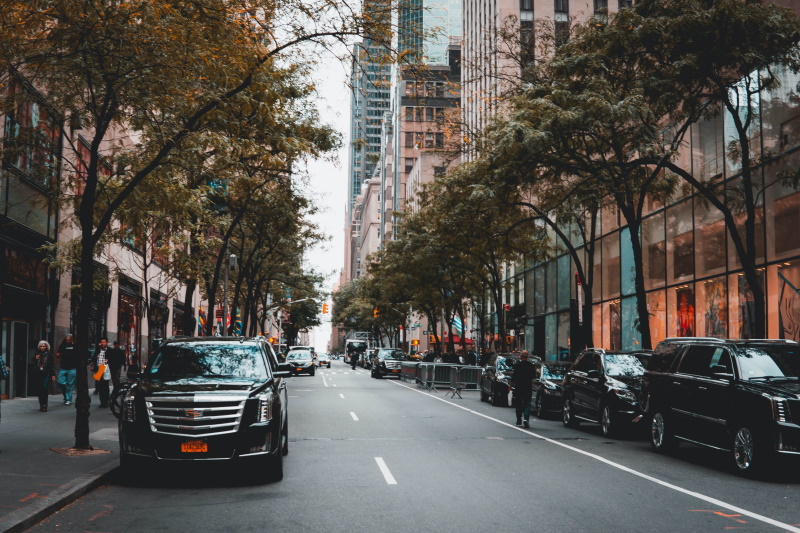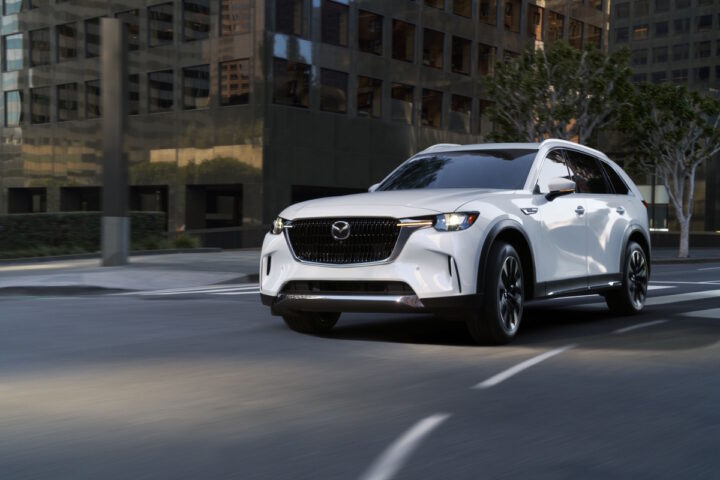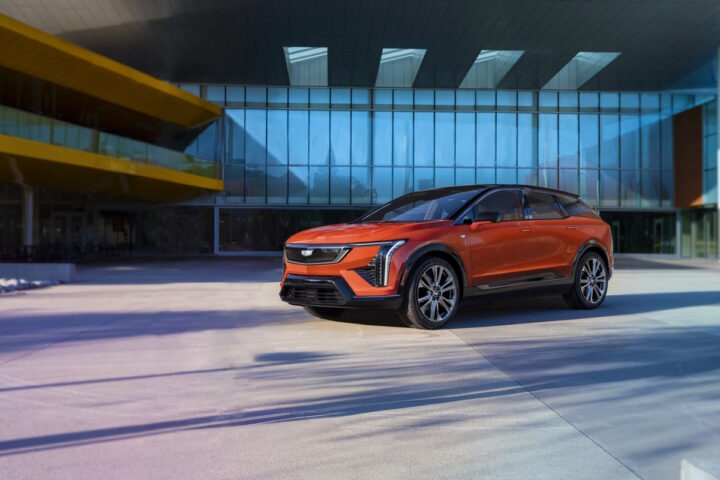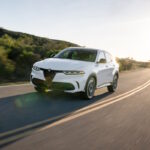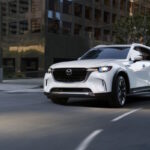OPINION
by Michael Satterfield – 11/03/2020
It was on Twitter where I first saw it, a wave of automotive and transportation journalists decrying the size of the new Cadillac Escalade, one described it as a “lumbering murdermobile” another wrote that driving it was “one of the most stressful experiences of my life.” I thought it was just hyperbolic clickbait headlines and dramatic Twitter posts, but then I started reading the thread and was surprised at how many of the respondents were militantly opposed to people driving large SUVs. The Twitter crowd was making a lot of wild claims everything from “SUVs are the biggest they have ever been” to the idea that large SUVs are designed to be “intimidating and violent toward humans on foot.” It isn’t surprising that the majority of the commenters were living in New York City, Los Angeles, and other large cities where they likely don’t drive much, but the amount of hate for the Suburban was compelling.
Now I am not going to dispute that the vast majority of people likely don’t need a massive SUV, I personally like small cars, I drove a classic Mini Cooper for years and the only truck I have ever personally owned was a 1975 Ford Courier, by far one of the most practical trucks ever sold in the USA. But I get the argument against big SUVs, especially from city dwellers who may not have much experience driving. One of the opinion pieces that was shared in the thread was ‘The case against American truck bloat‘ by Ryan Cooper of The Week, he makes the case that trucks and SUVs are not only bigger than ever but that they are killing pedestrians in record numbers. This was a follow-up to a story he did in The Wall Street Journal which drew the ire of Senator Ted Cruz and other conservatives online. Having grown up on a small ranch surrounded by and driving trucks and currently living in Texas where trucks are a way of life, I wondered two things: First, are trucks and SUVs really are getting bigger, or are they just getting more popular? Second, are they responsible for the uptick in pedestrian deaths?
To make his case that large SUVs and trucks are designed to kill, Cooper points to a report by the Governors Highway Safety Association (GHSA) which showed that the number of pedestrian deaths increased by 53% from 2009 to 2018, while total traffic deaths only saw an increase of 2%, and SUV related deaths increased 81% over the same time period. Digging into the report, because I actually like reading these things, there is some information that jumped out right away. According to the GHSA SUVs and Trucks are twice as likely to kill a pedestrian if they are involved in an accident, but passenger cars are involved in a higher percentage of pedestrian fatalities than SUVs and pickup trucks combined. 2019 data showed that 2,264 fatalities involved a passenger car, while 1,070 involved SUVs and 889 involved pickup trucks.
I was expecting trucks and SUVs to be at the top of the list for fatalities, not only because of the nightmarish vision painted by those who don’t like big vehicles but by the sales numbers. The Ford F150 has been the number one selling vehicle in the USA for decades and according to Edmunds the F150, Ram 1500, Chevrolet Silverado were the top three best-selling vehicles in 2019. A passenger car doesn’t make it on the ‘best seller’ list until the seventh spot in the top ten. So if more large SUVs and trucks are on the road than ever before, why is it that passenger cars still accounted for 15 percent more pedestrian fatalities?
As someone who gets to drive the latest and greatest SUVs and Trucks for a living, I think I know the answer… technology. The average age of vehicles on the road is 11.9 years old, with passenger cars being slightly older at 12.4 years old. These older cars don’t have the bevy of safety features that are common on modern vehicles. Lane departure alerts, lane-keeping, blindspot monitoring, heads-up displays, CarPlay, backup cameras, parking sensors, and other driver’s aids that are proven to reduce accidents. The GHSA data doesn’t include specific data on the vehicles involved in passenger fatalities outside of the type of vehicle, this is one possible explanation for the discrepancy between SUV sales compared to their total percentage of pedestrian fatalities. While anecdotal, my theory that the age of the vehicle might be more of a factor than the type was reinforced when I looked up a story that was quoted in Cooper’s article featuring a photo of an SUV involved in a pedestrian accident, the SUV was mid-90s Ford Explorer.
The other factor that is mentioned in both the Detroit Free Press story and the GHSA report is the obvious increase in distracted driving that coincides with the increase in smartphone use by drivers. According to the National Highway Traffic Safety Administration in 2018 nearly 30% of accidents with pedestrian fatalities could be tied to distracted driving. But it’s not just the drivers who are distracted, researchers from the University of Calgary have shown that distracted pedestrians using smartphones are also putting themselves at higher risk by being less likely to look before crossing streets and taking longer when crossing roadways. According to Pew Research, the percentage of US adults using smartphones grew from 35% in 2011 to 77% by 2018, which could be a larger contributing factor to the increase in pedestrian fatalities due to under or misreporting of accidents as distracted driving. A study by the National Safety Council looked at 180 fatal crashes from 2009 to 2011 where there was evidence that the driver had been using a phone, found in some years only 8 percent of those crashes were coded as distracted driving by the National Highway Traffic Safety Administration.
Driving while intoxicated is also a major factor in pedestrian traffic deaths, with impairment of the driver or pedestrian being a factor in 48% of all pedestrian fatalities in 2018 according to the GHSA report. Furthermore, the theory of larger vehicles being the determining factor in pedestrian deaths falls apart when you look at the states where the most pedestrian fatalities happen. The GHSA report shows that 47% of all pedestrian deaths happen in just five states, overlapping the vehicle sales data for those states shows that not all of them are leaders in large truck and SUV sales.
In California which leads the nation in total pedestrian fatalities for 2019, the top-selling vehicles for that year were the Honda Civic, Tesla Model 3, Honda Accord, Toyota Camry, and Toyota RAV4. When looking at the fatality rate per 100,000 people California still ranks between states like Nevada and Wyoming which favor larger trucks and SUVs. If vehicle choice was the determining factor in pedestrian fatalities, states like Idaho, Colorado, and Ohio should be outpacing California on a per capita basis, but they don’t.
While the GHSA report does show that large SUVs and trucks are more deadly when they are involved in a pedestrian accident, it also shows that the size of the vehicle isn’t likely the reason for the uptick in pedestrian deaths as passenger cars are still the number one catagory of the vehicle involved in pedestrian fatalities. In the report, SUVs saw their single biggest jump in 2015 which corresponds with the market shift in SUV sales, as would be expected when the catagory is isolated, however, the trend did not continue. From 2017-2018 passenger cars saw a 2.2% increase while the SUV catagory only grew by 0.9%, despite the continued growth in sales of SUVs in those years. It is more likely that other factors such as cell phone usage, intoxication, older cars with outdated technology, and increased urbanization are to blame for the increase in incidents.
Even the Cadillac Escalade and its Chevrolet and GMC cousins haven’t grown that much since their introduction and when compared to some of their predecessors they have actually shrunk. Same with the Ford Expedition/Lincoln Navigator which has grown five inches in length and three inches in width over the last 20 years. Compare this to vehicles like the Honda Accord which have grown nearly a foot in length and five inches wider since 2001. While the size of trucks and SUVs really haven’t; changed much, American buying habits certainly did.
In 2009 sales of light trucks and SUVs were about the same as passenger cars and they stayed fairly even through 2014. But in 2015 the scale started to tip radically towards SUVs and pickup trucks with sales outpacing passenger cars by over 2 million units, by 2019 truck and SUV sales soared to nearly 13 million units compared to just 4.7 million for passenger cars. American’s have been shifting away from cars in general so much so that in 2019 there were just five offerings in the US market for city cars, while sales in that segment grew by six percent, they represented just 80,000 units out of over 17 million new cars sold in the US market. For the 2020 model year that segment lost two of the five with the Smart ForTwo and Fiat 500 leaving the US market altogether. The Chevrolet Tahoe alone outsold all city cars in the US market by over 21,000 units, it appears that the people have spoken, and they want their SUVs.
Personally, I see the value and practicality of the SUV, especially if it is going to be your only vehicle and so do many Americans. As much as every auto journalist out there lauds the sports wagon as the savior of all car-kind, even we don’t buy them. Automakers are going to make what the market demands, and right now that is cookie-cutter midsize SUVs and full-size pickup trucks.

